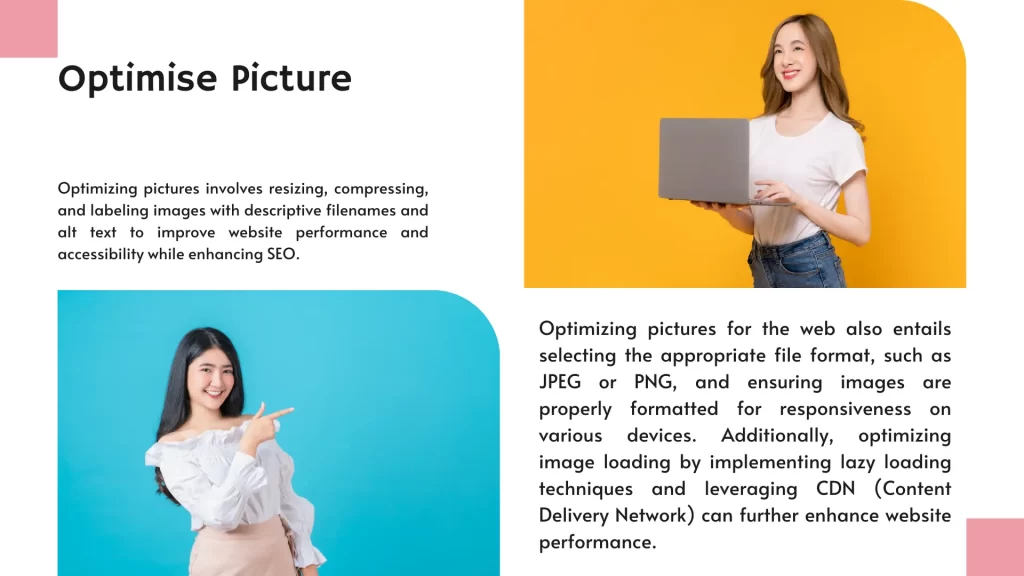Optimise Picture
Optimising pictures for your website is crucial for improving both user experience and search engine rankings. Optimise Picture involves compressing images to reduce file size without sacrificing quality. This ensures faster loading times, which is essential for retaining visitors and reducing bounce rates. Additionally, using descriptive file names and adding alt text helps search engines understand the content of your images, boosting your site’s visibility in search results.
Another key aspect of Optimise Picture is ensuring images are responsive, meaning they look good on all devices, from desktops to mobile phones. This can be achieved by using modern image formats like WebP and implementing responsive design techniques. By paying attention to these details, you not only enhance the visual appeal and performance of your website but also improve its accessibility and SEO, making it more likely to attract and retain visitors.
Introduction to Optimise Picture
Picture optimization involves techniques and strategies to enhance the performance and usability of images on websites. In this comprehensive guide, we’ll explore the importance of picture optimization, effective strategies, tools, best practices, and common pitfalls to avoid.
Why Picture Optimization Matters for Website Performance
Optimizing pictures is crucial for website performance as it directly impacts factors such as page load times, user experience, and search engine rankings. Slow-loading images can lead to higher bounce rates and reduced conversions, making picture optimization essential for overall website success.

Factors Impacting Picture Optimization
Several factors influence picture optimization, including image file size, format, resolution, and metadata. Understanding these factors is essential for implementing effective optimization techniques.
Strategies for Optimizing Pictures
a. Resizing and Compression: Resizing images to appropriate dimensions and compressing them without sacrificing quality can significantly reduce file size and improve load times.
b. Choosing the Right File Format: Selecting the optimal file format (e.g., JPEG, PNG, WebP) based on image content and usage can enhance compression and compatibility.
c. Image Alt Text and Descriptions: Providing descriptive alt text and image descriptions not only improves accessibility but also helps search engines understand image content.
d. Optimizing Image File Names: Using descriptive and keyword-rich file names can improve image visibility in search engine results.
e. Utilizing Responsive Images: Implementing responsive design techniques ensures images adapt to various screen sizes and devices, optimizing user experience across platforms.
Tools for Picture Optimization
Numerous tools are available for picture optimization, including online image compressors, image editing software, and content management systems with built-in optimization features. These tools streamline the optimization process and facilitate better image management.
Best Practices for Picture Optimization
Adhering to best practices such as maintaining image aspect ratios, optimizing for mobile devices, leveraging lazy loading, and implementing image caching can further enhance picture optimization efforts.
Common Mistakes to Avoid in Picture Optimization
Avoiding common mistakes like neglecting image compression, using oversized images, forgetting to add alt text, and ignoring responsive design principles is crucial for achieving optimal picture optimization results.
